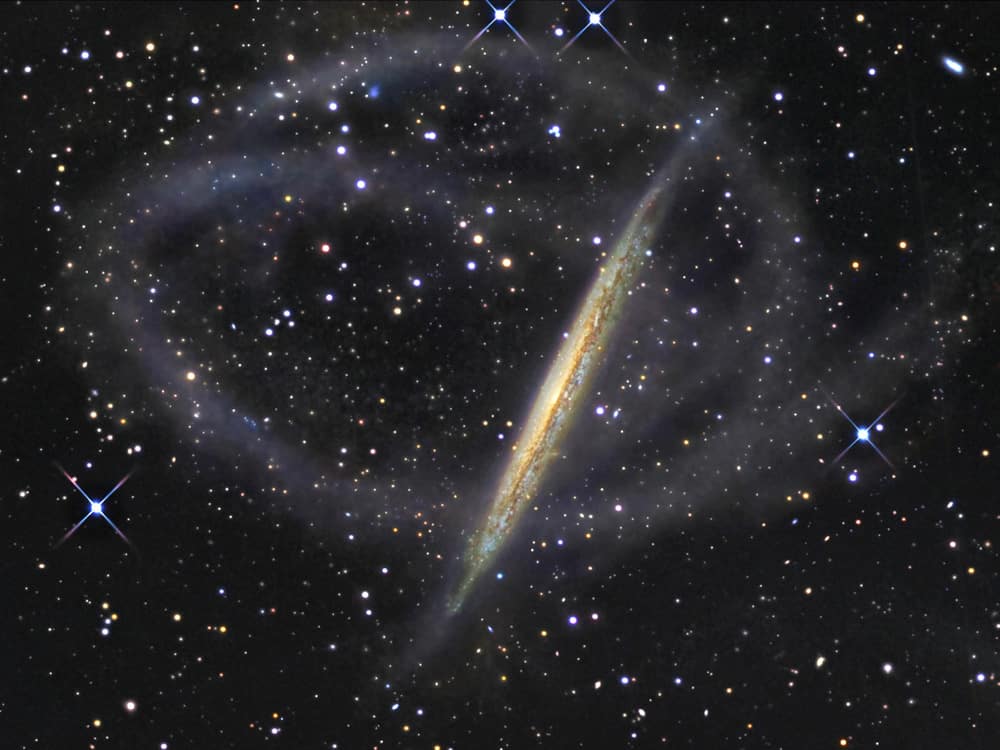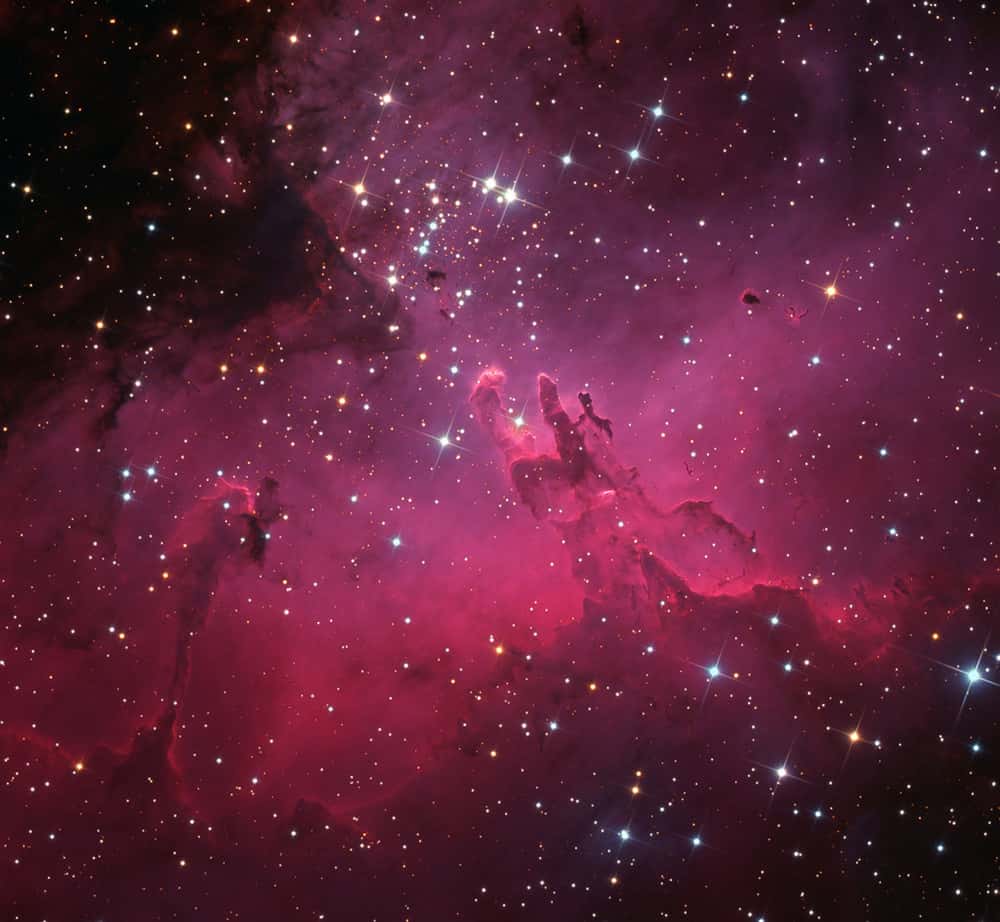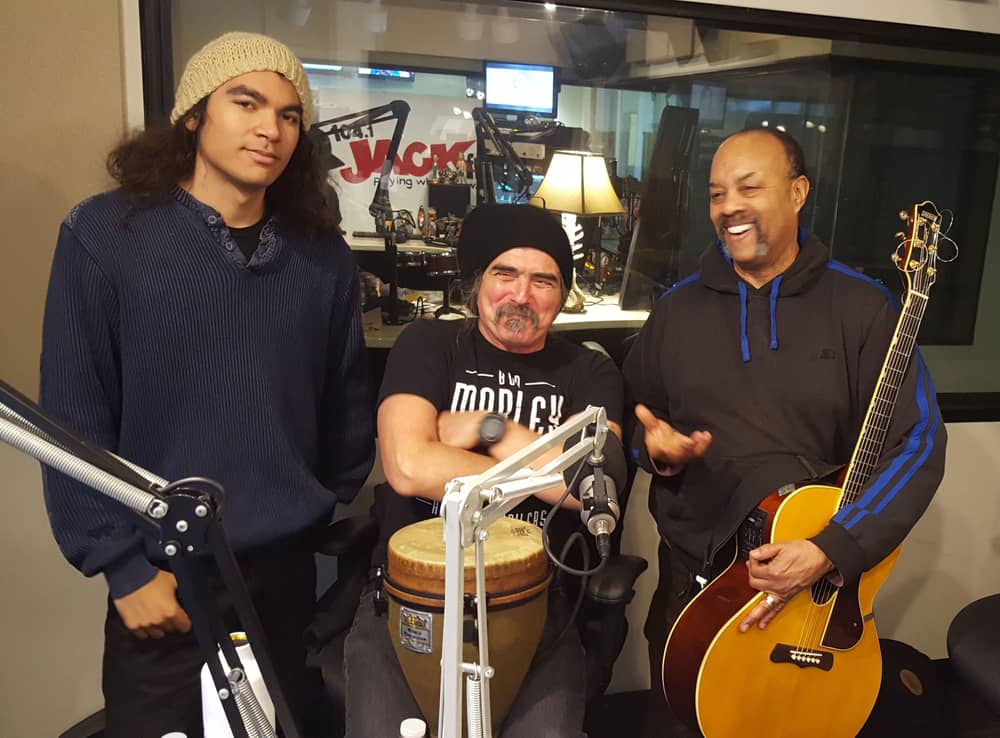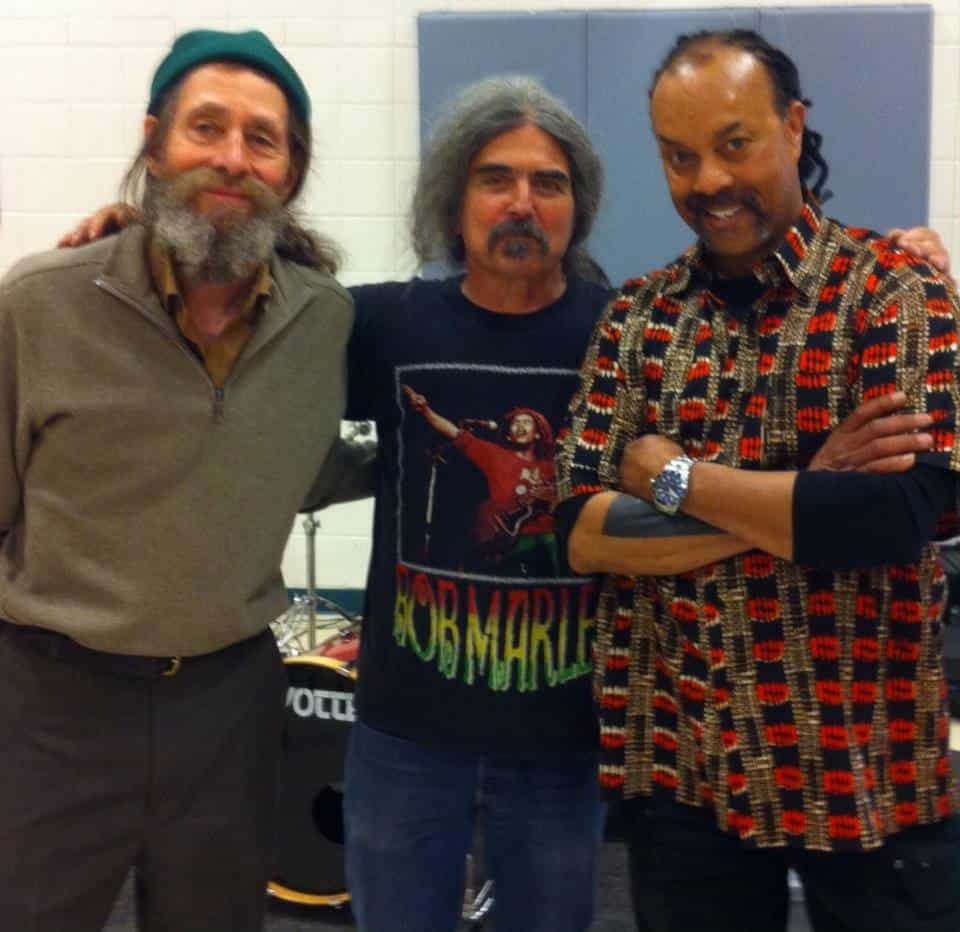Blog
Ben Allison (born November 17, 1966) is an American double bassist, composer, producer, bandleader, educator. In addition to his work as a performer, he co-founded the non-profit Jazz Composers Collective and served as its Artistic Director for twelve years. Allison is an adjunct professor at New School University and serves on the board of the New York chapter of the National Academy of Recording Arts and Sciences, where he serves as President.
Allison was born in New Haven, Connecticut. He began guitar lessons at the age of 9 at the Neighborhood Music School, in New Haven, Connecticut and privately with guitarist George Raccio. From 1983 to 1985, Allison studied West African, Haitian and Cuban drumming traditions with Richard Hill and attended the ACES Educational Center for the Arts (ECA), a performing arts school, and Wilbur Cross High School. In his senior year he studied briefly with bassist Steve Swallow and took classes in 20th-century music and early childhood development at Yale University. Allison entered New York University (NYU) in 1985 as a University Scholar to pursue a degree in jazz performance and bass studies. While at NYU he studied with Joe Lovano, Dennis Irwin, Jim McNeely and Steve LaSpina. Allison graduated from NYU in 1989 with a B.A. in Music Performance.
In 1992, Allison and several colleagues formed the Jazz Composers Collective, a musician-run, non-profit organization dedicated to fostering the creation and performance of new music and building audiences for jazz. The Collective’s annual concert series ran for 12 seasons and featured the work of 50 composers, the participation of more than 250 musicians and the premiere of more than 300 new works. Allison served as the Artistic Director of the Collective from its inception until its dissolution in 2005. Advisory Board members of the Collective included Dave Liebman, Joe Lovano and Andrew Hill.
more...Harold Eugene “Gene” Clark (November 17, 1944– May 24, 1991) was an American singer-songwriter and founding member of the folk rock band the Byrds. He was the Byrds’ principal songwriter between 1964 and early 1966, writing most of the band’s best-known originals from this period, including “I’ll Feel a Whole Lot Better“, “She Don’t Care About Time“, “Eight Miles High” and “Set You Free This Time“. Although he did not achieve commercial success as a solo artist, Clark was in the vanguard of popular music during much of his career, prefiguring developments in such disparate subgenres as psychedelic rock, baroque pop, newgrass, country rock, and alternative country.
Clark was born in Tipton, Missouri, the third of 13 children in a family of Irish, German, and American Indian heritage. His family moved to Kansas City, Missouri, where as a boy he began learning to play the guitar and harmonica from his father. He was soon playing Hank Williams tunes as well as material by early rockers such as Elvis Presley and the Everly Brothers. He began writing songs at the age of 11.
Clark was invited to join an established regional folk group, the Surf Riders, working out of Kansas City at the Castaways Lounge, owned by Hal Harbaum. On August 12, 1963, he was performing with them when he was discovered by the New Christy Minstrels. They hired him, and he recorded two albums with the ensemble before leaving in early 1964. After hearing the Beatles, Clark quit the New Christy Minstrels and moved to Los Angeles, where he met fellow folkie and Beatles convert Jim (later Roger) McGuinn at the Troubadour Club. In early 1964 they began to assemble a band that would become the Byrds.
Clark wrote or co-wrote many of the Byrds’ best-known originals from their first three albums, including “I’ll Feel a Whole Lot Better“, “Set You Free This Time“, “Here Without You”, “You Won’t Have to Cry”, “If You’re Gone”, “The World Turns All Around Her”, “She Don’t Care About Time” and “Eight Miles High“. He initially played rhythm guitar in the band, but relinquished that position to David Crosby and became the tambourine and harmonica player. Bassist Chris Hillman noted years later in an interview remembering Clark, “At one time, he was the power in the Byrds, not McGuinn, not Crosby—it was Gene who would burst through the stage curtain banging on a tambourine, coming on like a young Prince Valiant. A hero, our savior. Few in the audience could take their eyes off this presence. He was the songwriter. He had the ‘gift’ that none of the rest of us had developed yet…. What deep inner part of his soul conjured up songs like ‘Set You Free This Time,’ ‘I’ll Feel A Whole Lot Better,’ ‘I’m Feelin’ Higher,’ ‘Eight Miles High’? So many great songs! We learned a lot of songwriting from him and in the process learned a little bit about ourselves.” A management decision gave McGuinn the lead vocals for their major singles and Bob Dylan songs. This disappointment, combined with Clark’s dislike of traveling (including a chronic fear of flying) and resentment by other band members about the extra income he derived from his songwriting, led to internal squabbling, and he left the group in early 1966.He briefly returned to Kansas City before moving back to Los Angeles to form Gene Clark & the Group with Chip Douglas, Joel Larson, and Bill Rhinehart.
Columbia Records (the Byrds’ record label) signed Clark as a solo artist, and in 1967 he released his first solo album, Gene Clark with the Gosdin Brothers. The Gosdin Brothers were selected to back him because they shared the same manager, Jim Dickson, and because Chris Hillman, who played bass on the album, had worked with the Gosdin Brothers in the mid-1960s when he and they were members of the Southern California bluegrass band the Hillmen The album was a unique mixture of pop, country rock and baroque psychedelic tracks. It received favorable reviews, but unfortunately for Clark it was released almost simultaneously with the Byrds’ Younger Than Yesterday, also on Columbia, and (partly because of his 18-month absence from public attention) was a commercial failure. With the future of his solo career in doubt, Clark briefly rejoined the Byrds in October 1967 as a replacement for the recently departed David Crosby; following an anxiety attack in Minneapolis, he left after only three weeks. During this brief period with the Byrds, he appeared with the band on The Smothers Brothers Comedy Hour, lip-synching the group’s current single, “Goin’ Back“; he also performed “Mr. Spaceman” with the band.[19] Although there is some disagreement among the band’s biographers, Clark is generally viewed as having contributed background vocals to the songs “Goin’ Back” and “Space Odyssey” for the forthcoming Byrds’ album The Notorious Byrd Brothers and was an uncredited co-author, with McGuinn, of “Get to You”, also from that album.
In 1968, Clark signed with A&M Records and began a collaboration with the banjo player Doug Dillard. Guitarist Bernie Leadon (later with The Flying Burrito Brothers and The Eagles), bassist Dave Jackson and mandolinist Don Beck joined them to form the nucleus of Dillard & Clark; in addition, Michael Clarke briefly drummed for the group before joining The Flying Burrito Brothers.They produced two albums, The Fantastic Expedition of Dillard & Clark (1968) and Through the Morning, Through the Night (1969).
more...David Werner Amram III (born November 17, 1930) is a composer of orchestral and chamber works. He has worked with Leonard Bernstein, who chose him as The New York Philharmonic’s first composer-in-residence in 1966.
Some of Amram’s recent orchestral works include Symphonic Variations on a Song by Woody Guthrie, (commissioned by the Woody Guthrie Foundation and premiered in 2007); and Three Songs: A Concerto for Piano and Orchestra (written for and premiered by pianist Jon Nakamatsu in 2009).
more...Grand tidal streams of stars seem to surround galaxy NGC 5907. The arcing structures form tenuous loops extending more than 150,000 light-years from the narrow, edge-on spiral, also known as the Splinteror Knife Edge Galaxy. Recorded only in very deep exposures, the streams likely represent the ghostly trail of a dwarf galaxy – debris left along the orbit of a smaller satellite galaxy that was gradually torn apart and merged with NGC 5907 over four billion years ago. Ultimately this remarkable discovery image, from a small robotic observatory in New Mexico, supports the cosmological scenario in which large spiral galaxies, including our own Milky Way, were formed by the accretion of smaller ones. NGC 5907 lies about 40 million light-years distant in the northern constellation Draco.

Diana Jean Krall OC OBC (born November 16, 1964) is a Canadian jazz pianist and singer, known for her contralto vocals.[1] She has sold more than 6 million albums in the US and over 15 million albums worldwide. On December 11, 2009, Billboard magazine named her the second Jazz Artist of the Decade (2000–09), establishing her as one of the best-selling artists of her time.
Krall is the only jazz singer to have had eight albums debuting at the top of the Billboard Jazz Albums. To date, she has won three Grammy Awardsand eight Juno Awards. She has also earned nine gold, three platinum, and seven multi-platinum albums.
Krall was born on November 16, 1964, in Nanaimo, British Columbia, Canada, the daughter of Adella A. (née Wende), an elementary school teacher, and Stephen James “Jim” Krall, an accountant. Krall’s only sibling, Michelle, is a former member of the Royal Canadian Mounted Police (RCMP). Krall’s father played piano at home and her mother sang in a community choir. Krall began studying piano herself at the age of four, and took exams through The Royal Conservatory of Music. In high school she was a member of a student jazz group; at 15, she began playing professionally in local restaurants. Krall won a scholarship to attend the Berklee College of Music in Boston, where she studied from 1981 to 1983, before going to Los Angeles to play jazz. She returned to Canada to release her first album in 1993.
more...Hubert Charles Sumlin (November 16, 1931 – December 4, 2011) was a Chicago blues guitarist and singer, best known for his “wrenched, shattering bursts of notes, sudden cliff-hanger silences and daring rhythmic suspensions” as a member of Howlin’ Wolf‘s band. He was ranked number 43 in Rolling Stone‘s “100 Greatest Guitarists of All Time”.
Sumlin was born in Greenwood, Mississippi, and raised in Hughes, Arkansas. He got his first guitar when he was eight years old. As a boy, he met Howlin’ Wolf by sneaking into a performance.
Wolf relocated from Memphis to Chicago in 1953, but his longtime guitarist Willie Johnson chose not to join him. In Chicago, Wolf hired the guitarist Jody Williams, but in 1954 he invited Sumlin to move to Chicago to play second guitar in his band. Williams left the band in 1955, leaving Sumlin as the primary guitarist, a position he held almost continuously (except for a brief spell playing with Muddy Waters around 1956) for the remainder of Wolf’s career. According to Sumlin, Howlin’ Wolf sent him to a classical guitar instructor at the Chicago Conservatory of Music to learn keyboards and scales. Sumlin played on the album Howlin’ Wolf (called the “rocking chair album”, with reference to its cover illustration), which was named the third greatest guitar album of all time by Mojo magazine in 2004.
more...Charles Mitchell “Dolo” Coker (November 16, 1927 – April 13, 1983) was a jazz pianist and composer who recorded four albums for Xanadu Records and extensively as a sideman, for artists like Sonny Stitt, Gene Ammons, Lou Donaldson, Art Pepper, Philly Joe Jones, and Dexter Gordon.
Charles Mitchell “Dolo” Coker was born in Hartford, Connecticut on November 16, 1927, raised in both Philadelphia and Florence, South Carolina. The first musical instruments Coker played in childhood were the C-melody and alto saxophones, learning them at a school in Camden, South Carolina. By the age of thirteen he was starting to play piano. Coker moved to Philadelphia, where he studied piano at the Landis School of Music and at Orenstein’s Conservatory. Coker also played some shows on piano for Jimmy Heath while in Philadelphia.
He was also a member of the Frank Morgan Quartet (with Flip Greene on bass and Larance Marable on drums).
Coker did not record his own album as a leader until 1976, when he recorded his debut Dolo! with Blue Mitchell, Harold Land, Leroy Vinnegar and Frank Butler. That following day he recorded California Hard for Xanadu Records, with Art Pepper replacing Harold Land on sax. Following California Hard were Third Down and All Alone. He continued to work as a sideman for other artists until he died of cancer at the age of fifty-five on April 13, 1983.
Coker’s nickname is sometimes misspelt “Dodo” in sleeve notes and books on jazz.
https://www.youtube.com/watch?v=uWrBPd_7aTk
more...Performing for Friday Shabbat Service at Mt Zion in St Paul. 11-15-19 730pm with pre service music at 715pm Visual T’filah (Pulpit Guest: Nancy Brady, Neighborhood House President; Birthday Blessings)
more...A star cluster around 2 million years young surrounded by natal clouds of dust and glowing gas, M16 is also known as The Eagle Nebula. This beautifully detailed portrait of the region was made with groundbased narrow and broadband image data. It includes cosmic sculptures made famous in Hubble Space Telescope close-ups of the starforming complex. Described as elephant trunks or Pillars of Creation, dense, dusty columns rising near the center are light-years in length but are gravitationally contracting to form stars. Energetic radiation from the cluster stars erodes material near the tips, eventually exposing the embedded new stars. Extending from the ridge of bright emission at lower left is another dusty starforming column known as the Fairy of Eagle Nebula. M16 lies about 7,000 light-years away, an easy target for binoculars or small telescopes in a nebula rich part of the sky toward the split constellation Serpens Cauda (the tail of the snake).

Kevin Tyrone Eubanks (born November 15, 1957) is an American jazz and fusion guitarist and composer. He was the leader of The Tonight Show Band with host Jay Leno from 1995 to 2010. He also led the Primetime Band on the short-lived The Jay Leno Show. Eubanks was born into a musical family. His mother, Vera Eubanks, is a gospel and classical pianist and organist. His uncle, Ray Bryant, was a jazz pianist. His older brother, Robin Eubanks, is a trombonist, and his younger brother Duane Eubanks is a trumpeter. Two cousins are also musicians, the late bassist David Eubanks and the pianist Charles Eubanks. Kevin studied violin and trumpet before settling on the guitar.
As an elementary school student, Eubanks was trained in violin, trumpet, and piano at the Settlement Music School in Philadelphia. He later attended Berklee College of Music in Boston and then moved to New York to begin his professional career.
more...William Edward “Little Willie” John (November 15, 1937 – May 26, 1968) was an American R&B singer who performed in the 1950s and early 1960s. He is best known for his successes on the record charts, with songs such as “All Around the World” (1955), “Need Your Love So Bad” (1956), “Talk to Me, Talk to Me” (1958), “Leave My Kitten Alone” (1960), “Sleep” (1960), and “Fever” (1956). An important figure in R&B music of the 1950s, John was posthumously inducted into the Rock and Roll Hall of Fame in 1996. John was born in Cullendale, Arkansas, United States, one of ten children born to Lillie (née Robinson) and Mertis John. Many sources erroneously give his middle name as Edgar. His family moved to Detroit, Michigan, when he was four, so that his father could find factory work. In the late 1940s, the eldest children, including Willie, formed a gospel singing group. Willie also performed in talent shows, which brought him to the notice of Johnny Otis and, later, the musician and producer Henry Glover. After seeing him sing with the Paul “Hucklebuck” Williams orchestra, Glover signed him to a recording contract with King Records in 1955. He was nicknamed “Little Willie” for his short stature. He was the brother of the singer Mable John, who recorded for Motown and Stax and was member of The Raelettes, the vocal quartette backing Ray Charles; his son Keith John is a backing vocalist for Stevie Wonder.
His first recording, a version of Titus Turner‘s “All Around the World“, was a hit, reaching number 5 on the Billboard R&B chart. He followed up with a string of R&B hits, including the original version of “Need Your Love So Bad“, written by his elder brother Mertis John Jr. One of his biggest hits, “Fever” (1956) (Pop number 24, R&B number 1), was made famous in a cover version recorded by Peggy Lee in 1958, but John’s version sold over one million copies and was awarded a gold disc. Another song, “Talk to Me, Talk to Me“, recorded in 1958, reached number 5 on the R&B chart and number 20 on the Pop chart. It also sold over one million copies. A few years later it was a hit once again in a cover version by Sunny & the Sunglows. John also recorded “I’m Shakin'”, by Rudy Toombs, “Suffering with the Blues”, and “Sleep” (1960, Pop number 13). In all, John made the Billboard Hot 100 a total of fourteen times. A cover version of “Need Your Love So Bad” by Fleetwood Mac was also a hit in Europe. Another of his songs to be covered was “Leave My Kitten Alone” (1959), recorded by The Beatles in 1964 and intended for their Beatles for Sale album. However, the track was not released until 1995.
more...Jerome Richardson (December 25, 1920 – June 23, 2000) was an American jazz musician, tenor saxophonist, and flute player, who also played soprano sax, alto sax, baritone sax, clarinet, bass clarinet, alto flute and piccolo. He played with Charles Mingus, Lionel Hampton, Billy Eckstine the Thad Jones/Mel Lewis Big Band, Kenny Burrell, and later with Earl Hines‘ small band. Richardson was born in Oakland, California, and died in Englewood, New Jersey.
https://www.youtube.com/watch?v=NaUb7r6CLXw
more...Flamenco Fridays featuring Bulerias.
When dancing, you can typically expect one letra to enter with, another letra to “dance to,” and one or two coletillas. (Sometimes there will be more singing, sometimes less.)
Within the structure, it will look something like this:
-
Salida [letra to enter with. Always come in with the singing of a letra.]
-
Marcaje(s) [next letra or coletilla]]
-
Paso de bulerías [letra or coletilla]
-
Llamada [letra or coletilla]
-
Patá [end of letra or coletilla]
-
(Marcaje or Paso de bulerías) [end of letra or coletilla]
-
Llamada [coletilla]
-
Final [coletilla]
Once you begin dancing, the singing never stops. In other words, you will not be abandoned! The singer will continue singing (or giving you jaleos at the least) until have finished your dance. (Learn more about that, and see a video example with Mercedes Ruíz here.)
https://www.youtube.com/watch?v=-Ci7ifHO2hQ
more...Interview with Julian Manzara, Van Nixon and mick laBriola hosted by Steve LeBeau on 11-14-19 in Minneapolis.
https://wccoradio.radio.com/media/audio-channel/synapse-think-tank-air-episode-56-11-14-19?fbclid=IwAR2EDB53ND5Uh9Aw4PC39xH653tbSty8hLeNvCXS7PvcPVet9Myw64bjikM

Van Nixon, Julian Manzara and Mick LaBriola will be recording a podcast presentation by my comrade Steve LeBeau from KFAI radio. We were up to no good for year airing our hilarity and insight.
https://wccoradio.radio.com/media/podcast/synapse-podcast

More Posts
- World Music with Kroke & Anna Maria Jopek
- Daily Roots with Coco Tea
- The Cosmos with M20
- John Mclaughlin Day
- Frank Wess Day
- Frankie Newton Day
- World Music with Kome-m’dinga Ensemble
- Daily Roots with Sizzla
- Flamenco Fridays with Pedro Pena, Terremoto de Jerez, Parilla de Jerez, Jose Menade, Manolo Brenes, Manolillo el Herraor y Angel Luis Canete
- The Cosmos with NGC 1499
- James Carter Day
- Stephen Stills Day
- Herbie Nichols Day
- World Music with Tenzin Choegyal
- Daily Roots with the Skatalites
- The Cosmos with LHA 120-N11
- Trombone Shorty Day
- Ari Brown Day
- Barış Manço Day
- Little Smokey Smothers Day